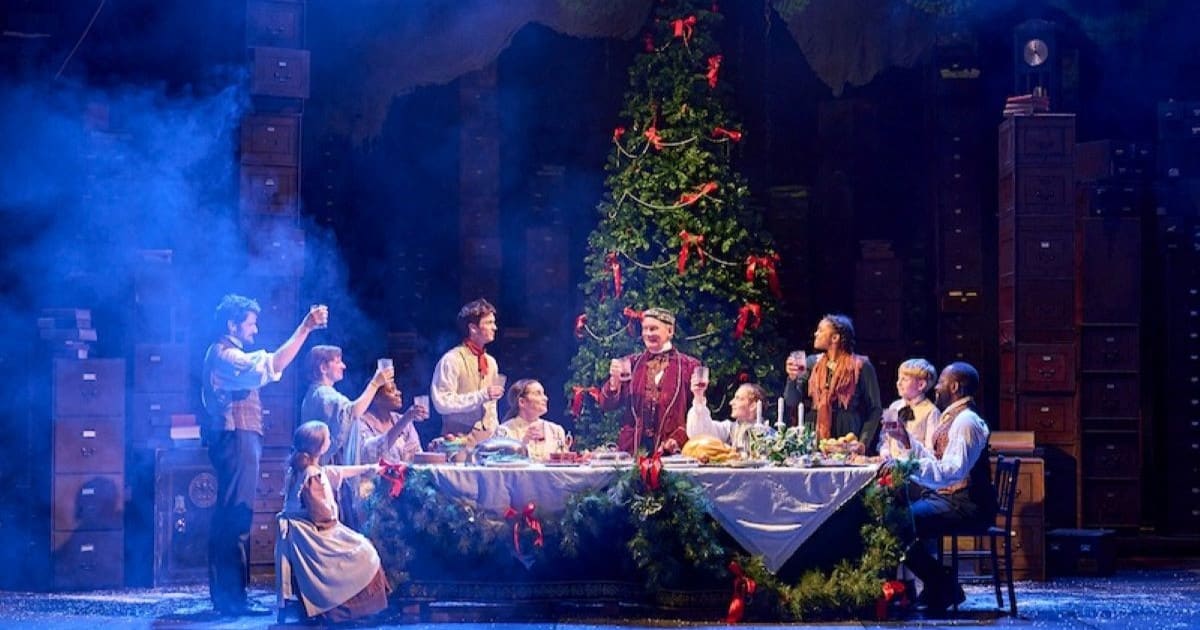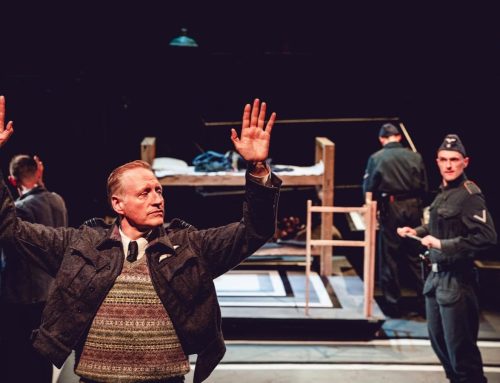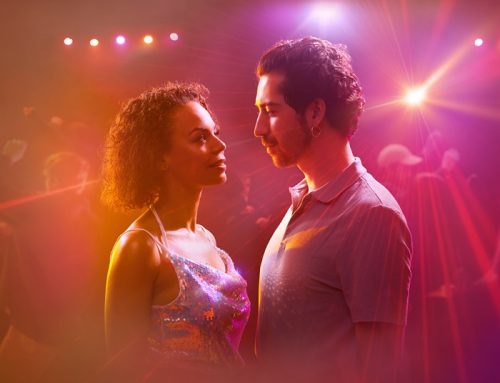Mark Gatiss’s faithful, indeed reverential adaptation of Dicken’s classic, first seen in 2021, gets a welcome revival at the gloriously gothic Alexandra Palace Theatre. The show looks tremendous, courtesy of absorbing direction, top-notch costumes, set design and lighting, and polished performances throughout. But one ends up wishing the adaptation had taken a few more risks with the storytelling. Determined to offer up what he sees as a faithful adaptation Gatiss loses the opportunity to tell us something about Ebenezer Scrooge that we do not already know.
It is an arctic Christmas Eve. Mean-spirited humbug Scrooge encounters an unexpected visitor from past: the spirit of former business partner Marley (Peter Forbes). Enveloped in heavy chains as penalty for a lifetime of avarice, the unwelcome guest explains tells Scrooge he still has time to change his ways. Keith Allen takes the role of the parsimonious usurer who “carries his own low temperature always about him”, and who finds redemption and renewal though visitations from the Ghosts of Christmases Past (Bettrys Jones), Present (Joe Shire) and Yet To Come.
In the opening scenes Allen brings a younger, wilier, more robust feel to the character than in many productions. So energetic is the alacrity with which this Scrooge thwacks a carol-singer with a long metal ruler, one imagines his ethereal visitors might well turn tail and run at the sight of it.
The performer’s comic skills are in evidence too. He splits the word “humbug” in two, savouring each syllable as if entranced by the sheer malice of the word. “Waste not, want not” he says with droll resignation as he extinguishes Marley’s desktop candle mere seconds after his business partner expires.
The sheer comic vigour Allen brings to his early Scrooge makes the miserly moneylenders’ path to salvation, or at least the rediscovery of his basic humanity, a trifle hard to credit. This sometimes feels like a character standing on the sidelines; almost a mystified spectator watching events happen to him that drive a journey in which he has no emotional or psychological agency.
Gatiss’ main foray away from literalness in this adaptation lies in his focus on ghosts, of which he is a great fan. There are certainly spiritual appearances aplenty. ““This boy is Ignorance, this girl is Want,” Christmas Present tells Scrooge as puppet phantoms, looking much like Chucky from the Child’s Play movie franchise, climb up his (gorgeous) lime-green smoking jacket. Wispy white wraiths wend their way through the auditorium as they head onstage. An ethereal coach and horses takes flight through the sky in one of the many stunningly rendered back projections. Atmospherically all these ghosts are spellbinding, but to the story they add not a whit.
Jones is excellent as Christmas Past although precisely what drives the young Scrooge, alive with life, into the arms of “the chill wind of pecuniary reality”, bent on self-sabotage, remains maddeningly unexplored. Peter Forbes impresses as a dour officious Marley, as does Edward Harrison as the ever-forgiving Bob Cratchit. Ryan Weston’s Tiny Tim, on the permanent cusp of imminent expiration, is a delight.
Where this production excels most is in the way it looks and sounds. Paul Wills’ set, filing cabinets the height of trees, evoke the feel of a squadron of sentinels protecting skinflint Scrooge from the attention of an over-friendly world. An ever-present haze suggests London fog. Designing for the Alexandra Palace Theatre’s cavernous space is a notoriously difficult task and Wills nails it.
Nina Dunn’s impeccable back projections include a spooky mansion, a graveyard, and a threatening London skyline shrouded in forbidding shadows and falling snow. Philip Gladwell’s lighting draws on the tricks of an entire genre of Hollywood horror movies: sometimes single spots, sometimes a bank of harsh white directed straight at the audience.
Georgina Lamb’s movement direction turns the Cratchits’ Christmas lunch into an exquisitely rendered piece of choreography. A set-piece dance sequence at Fezziwig’s Christmas ball gets, and deserves, a round of applause of its own. Director Adam Penford ensure the huddled masses of the Camden poor move about the stage with almost balletic precision. Ella Wahlström’s soundscape, wind, chiming clocks, and clanging bells is moody and beautifully crafted. Tom Attwood’s musical direction brings a pleasing slice of carol singing to the final scenes.
A Christmas Carol: A Ghost Story is an appealing, finely executed piece of theatre. But it is still Dickens by the numbers.
Writer: Charles Dickens adapted by Mark Gatiss
Director: Adam Penford
More Recent Reviews
The King of Hollywood. White Bear Theatre.
Douglas Fairbanks was a groundbreaking figure in early American cinema. Celebrated for his larger-than-life screen presence and athletic prowess, [...]
Gay Pride and No Prejudice. Union Theatre
Queer-inspired reimaginations of Jane Austen’s Pride and Prejudice are a more common species than one might initially imagine. Hollywood [...]
Knife on the Table. Cockpit Theatre.
Knife on the Table, Jonathan Brown’s sober ensemble piece about power struggles, knife violence, and relationships in and around [...]





